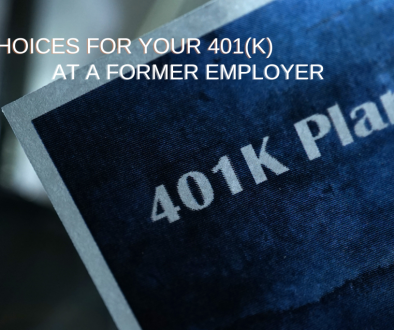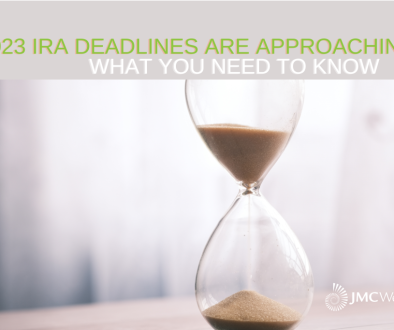Take Charge of Your 401K – Part 2
Taking Your Plan to Your New Job
One of the best arguments in favor of rolling over your old retirement plan is that it can help simplify your life. In our experience, investors tend to lose track of accounts that aren’t right in front of them. Life gets busy, and failing to modify your investment strategies to keep up with your needs can undermine your long-term financial success.
Putting your assets in one place can help ensure that your investments remain consistent with your financial goals. If you are considering this choice, remember to take a look at your new employer’s plan before making the switch. First, make sure the new plan has the investment choices that you are looking for. Second, check out the fees associated with the new plan. And third, see when you can join the plan. In some instances, you have to wait until the next enrollment period.
Rolling 401(k) Assets into an IRA
You can elect to roll over your traditional 401(k) into a traditional IRA. To initiate the rollover, you’ll need to select an IRA provider and work with your 401(k) plan administrator. If the money is moved directly from your plan administrator to the IRA provider, no taxes are due on the assets that you move, and any new earnings accumulate tax deferred. In recent years, Roth 401(k) plans have been provided by more 401(k) plan administrators. Rolling over your Roth 401(k) is a similar process to rolling over a traditional 401(k). If the money is moved directly, no taxes are due on the assets that you move, and any new earnings accumulate tax deferred.
Once you reach age 73, you must begin taking required minimum distributions from a traditional Individual Retirement Account in most circumstances. Withdrawals from traditional IRAs are taxed as ordinary income and, if taken before age 59½, may be subject to a 10% federal income tax penalty. To qualify for the tax-free and penalty-free withdrawal of earnings, Roth 401(k) distributions must meet a “ve-year holding requirement and occur a$er age 59½. Tax-free and penalty-free withdrawal can also be taken under certain other circumstances, such as the owner’s death. Employer matching is pretax and not distributed tax-free during retirement.
The content is developed from sources believed to be providing accurate information. The information in this material is not intended as tax or legal advice. It may not be used for the purpose of avoiding any federal tax penalties. Please consult legal or tax professionals for specific information regarding your individual situation. This material was developed and produced by FMG Suite to provide information on a topic that may be of interest. FMG Suite is not affiliated with the named broker-dealer, state- or SEC-registered investment advisory firm. The opinions expressed and material provided are for general information, and should not be considered a solicitation for the purchase or sale of any security. Copyright 2023 FMG Suite.




